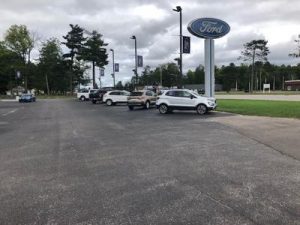Missing the Import of Current Retail Automotive Conditions
It seems as if nearly everyone in the industry, especially dealers, wants answers to two important questions:
When will the current chip shortage, which is affecting new vehicle production levels and limiting available inventory for dealers, be over?
When will wholesale supplies come back and high wholesale  values for vehicles come down?
values for vehicles come down?
Both questions reflect the stresses dealers are feeling in their new and used vehicle departments. Many believe that if they had more new and used vehicle inventory, they would be selling more vehicles.
But as I’ve fielded these questions from dealers, and tried my best to provide some answers, it has occurred to me that dealers and others in the industry may be missing or overlooking the import of the current moment. While dealers worry about when new and used vehicle inventories return to more “normal” levels, I believe they should be more concerned that conditions will return to normal and the consequences for their bottom lines.
Consider, for example, that so far this year, dealers are selling larger numbers of new and used vehicles out of smaller-than-ever inventories–and making record profits–than they did by this time last year. The National Automobile Dealers Association’s Dealership Financial Profile shows that, through the end of March, the average dealer’s net profit before tax is up nearly 200 percent. The profile also shows that the average retail net profit per new and used vehicle retailed is a healthy $248 and $613, respectively.
It seems to me that such record levels of profitability owe precisely to the conditions dealers are complaining and worrying about right now–lower-than-ever levels of inventory. We know, for example, that if dealers had twice as many new and used vehicles on the ground today, with the same level of demand, profitability would suffer. There would be higher carrying costs, more aged units and less control of vehicle prices.
Broadly speaking, these conditions reflect what might be regarded as the best of all possible worlds for any business–high demand and limited supply. Even better, new research from Kelley Blue Book suggests that consumers understand the current conditions. They expect to see less selection and higher prices when they shop for a car. Sixty percent of new vehicle buyers say they plan to buy a vehicle despite less selection and higher prices.
It should also be noted that the current highly profitable nature of the car business in the current moment doesn’t largely owe to disciplined management decisions on the part of dealers. Rather, it’s a positive outcome of COVID-19, the chip shortage and a host of other factors that have brought a level of equilibrium to demand and supply that many car business veterans like me have never seen in our careers.
And yet, it seems like many dealers are longing to return to the way things used to be. They would feel better if they had higher numbers of new and used vehicles on the ground. They would prefer to suffer less discomfort and stress from current reconditioning backlogs and the need to convince some customers to order vehicles or purchase the less-desirable vehicle that’s available on your lot.
Such discomfort seems like a small price to pay for the highly profit-favorable circumstances that a limited-supply, high-demand market gives to dealers today.
If nothing else, the current market disproves the long-standing belief that you need to have more inventory on the ground than you sell. It shows that dealers can successfully operate in an environment that requires everyone to work faster and harder to acquire the cars, get them ready to sell and capture your share of current demand.
From now on, when dealers ask me when the chip shortage might end, and new and used vehicle supplies will return to normal, I’ll respond with a different question: Are you sure that’s what you really want?
